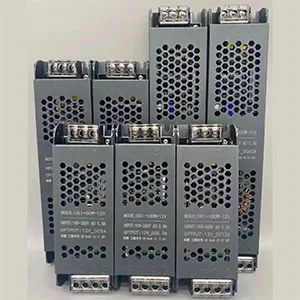In today’s fast-changing world, lighting is no longer just about visibility it’s about creating the right mood, saving energy, and enhancing both function and design. Whether for residential, commercial, or industrial spaces, the shift to LED lighting has opened up new possibilities. Among these, LED strip lights and their power systems have become essential tools for modern lighting solutions.
As consumer expectations evolve, so do the responsibilities of those who develop and manufacture the components behind the scenes. This includes not only the design of the lighting itself but also the development of reliable, compatible power systems to support it.
The Role of a LED Strip Lights Manufacturer in Modern Design
When people think of LED strip lights, they often picture clean lines of light tucked under cabinets, outlining architectural features, or creating a soft ambiance in stores and offices. But the flexibility and performance of these lights don’t happen by accident; it all starts with the manufacturer.
A LED Strip Lights manufacturer plays a critical role in shaping how these products perform in the real world. It’s not just about producing lights, it’s about understanding material quality, creating custom lengths, ensuring color accuracy, and maintaining energy efficiency. Good manufacturing practices allow for lights that can bend, curve, and shine consistently, whether for a narrow hallway or a complex installation on a building façade.
Manufacturers who specialize in strip lights are often the backbone behind how easily designers and installers can work with these lights across various projects.
Features That Make LED Strip Lights Effective
Beyond aesthetics, there are technical elements that influence how LED strip lights perform. Durability, color temperature consistency, and flexible mounting options all contribute to their usability.
Also, the adhesive strength, waterproofing (for outdoor or bathroom use), and heat dissipation mechanisms are essential for maintaining performance over time. Without these, even the most attractive lighting designs can fall short. That’s why attention to detail during the production stage is crucial.
Another point worth noting is the ability to support custom voltage or brightness requirements. These aren’t just off-the-shelf solutions; many professional applications require collaboration between clients and manufacturers to get the desired result.
Power Supplies: The Unsung Heroes of LED Lighting
While strip lights might be the visible part of the system, the real performance often depends on what powers them. Without a well-matched and stable power supply, even the best LED lights can flicker, overheat, or fail prematurely.
Power supplies regulate voltage and current, making sure the LEDs operate within safe limits. They also play a role in energy efficiency and safety, especially in larger installations where reliability matters over long periods of use. For this reason, the power supply is just as important as the light itself if not more so in some complex projects.
Why Working With a LED Power Supply Manufacturer Matters
In professional lighting design, there’s no room for error. Every element of the system needs to work seamlessly together, especially in large-scale installations such as signage, shopping malls, or outdoor architectural features.
That’s where experience becomes key. A specialized LED Power Supply manufacturer understands how to build devices that not only match the technical demands of various LEDs but also meet safety certifications and efficiency standards.
Whether it’s creating power supplies with waterproof casings, silent cooling features, or precise voltage options, manufacturers in this space are often behind the reliability of entire lighting systems. Without their engineering expertise, performance could suffer, and so could safety.
From Design to Application: Lighting Systems in Action
One of the strongest points of LED strip lights and well-designed power supplies is how adaptable they are across different use cases. In retail settings, they provide soft accents that guide customers through a space. In residential interiors, they add warmth under cabinets or along staircases. For outdoor signage, they ensure visibility and durability, rain or shine.
In each of these examples, the success of the installation depends on the harmony between the strip lights and the power source. When manufacturers collaborate with designers or installers, the results tend to be more efficient, safer, and longer-lasting.
Final Thoughts
When exploring lighting options, many users focus on visual appeal and brightness. But behind those lights are the manufacturers who ensure the entire system functions as it should from the moment it’s installed to years down the line.
Whether it’s selecting a LED Strip Lights manufacturer that offers customization and consistent quality, or working with a LED Power Supply manufacturer that understands the demands of various lighting environments, making the right choice can shape the success of any project.
Ultimately, thoughtful product development, reliable materials, and proper system design are what turn lighting from a utility into an experience one that lasts, performs, and adapts to the changing needs of the modern world.

